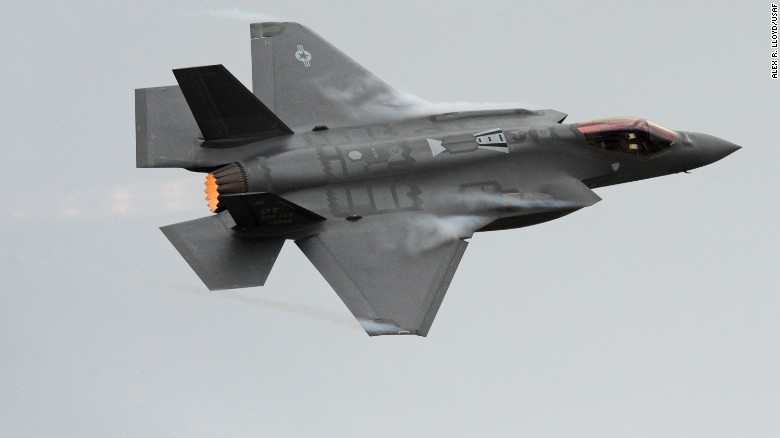The F-35 Joint Strike Fighter has drawn criticism once again, this time, from President Elect Donald Trump.
The incoming president took to Twitter to voice his concerns about the high costs associated with the development of the F-35, which is on track to become the most expensive weapons system in human history by a wide margin. Current predictions place the program’s overall cost to be in the neighborhood of $1 trillion.
Trump did not explain whether or not he intends to make changes to the existing F-35 program or if the Lockheed Martin effort will be scrapped under his administration, stating only, “The F-35 program and cost is out of control. Billions of dollars can and will be saved on military (and other) purchases after January 20th.”
The 2017 Department of Defense budget that was released earlier this year calls for $10.1 billion in F-35 spending in 2017 alone, which should outfit the Air Force with forty-three jets, sixteen for the Marine Corps and four for the Navy. The Joint Strike Fighter is intended to replace a number of different aging platforms, including the workhorse A-10 Warthog, which has been in use since 1977.
Trump also called out Boeing via Twitter last week, citing “out of control” costs for their new Air Force One fleet currently being developed. The President Elect went on to urge the federal government to “cancel the order.”
Republican Senator John McCain agreed with Trump’s take on the exorbitant costs associated with the problem-ridden F-35, but made it clear that the president will not be able to cancel the program that has already been funded.
“He can reduce the buy over time, next year, as we look at it again,” McCain told Reuters.
Other experts agree that Trump will be unable to simply turn off the flow of funds into Lockheed’s bank accounts, but his stance on the platform could usher in a new age in defense spending that requires more shared risk than the existing “blank check” approach utilized by the government in the development of the F-35.
“Unwinding a program of this size, involving contractors in nearly every state and eight partner nations, is highly unlikely,” Peter Arment, analyst at Baird Equity Research, wrote Monday. “But what is likely … is the message to the industry of potentially more risk-sharing on costs. This is potentially a new paradigm for the industry.”
Issues with the F-35 have created costly retrofits and slowed production, greatly increasing the per-plane cost associated with the aircraft. In August, Michael Gilmore, the Defense Department’s director of operational testing, released a memo stating the aircraft was on track to “fail to deliver” on its promise to be the future of military aviation, going on to say that “achieving full combat capability with the Joint Strike Fighter is at substantial risk.”
Roger Cabiness, a spokesman for the Department of Defense provided more detail into the content of the memo, explaining that it “provides details of significant performance problems that must be corrected for the Joint Strike Fighter to achieve full combat capability, as well as concerns that the program likely lacks the resources needed to correct those problems consistent with beginning operational testing in 2018.”
Already have an account? Sign In
Two ways to continue to read this article.
Subscribe
$1.99
every 4 weeks
- Unlimited access to all articles
- Support independent journalism
- Ad-free reading experience
Subscribe Now
Recurring Monthly. Cancel Anytime.
In September, the Air Force grounded its existing fleet of F-35s after discovering peeling and crumbling insulation in the aircraft’s avionics cooling lines inside the fuel tanks. A total of fifty-seven already built F-35s were forced to undergo repairs before being brought back into flight status.
“We welcome the opportunity to address any questions the president-elect has about the program,” said Jeff Babione, Lockheed’s general manager for the F-35 program. “We understand the importance of affordability and that’s what the F-35 has been about.”
Aerospace Industries Association, an industry trade group with a stake in the F-35’s success, met with Trump’s transition team on Monday. After the meeting, spokesmen from the group expressed confidence that they would be able to address the concerns of the incoming president regarding the program.
Current plans call for 2,400 more F-35 Joint Strike Fighters to be purchased by the United States as replacements for many combat jets currently in use. Production of the fighter spans across forty-five states and employs tens of thousands, making it extremely unlikely any president could garner enough support to do away with the program within Congress.
Byron Callan, financial analyst at Capital Alpha Partners, sent a note to investors in Lockheed not to fear, despite Trump’s recent Tweets: “We strongly doubt that Trump has been fully informed of the F-35 program or alternatives to modernize U.S. tactical aircraft inventories. As well, we strongly doubt that he has been informed of the unique international nature of the program.”
He added: “We don’t believe investors should panic over the program’s prospects based on a single Trump tweet.”
Image courtesy of the U.S. Air Force









